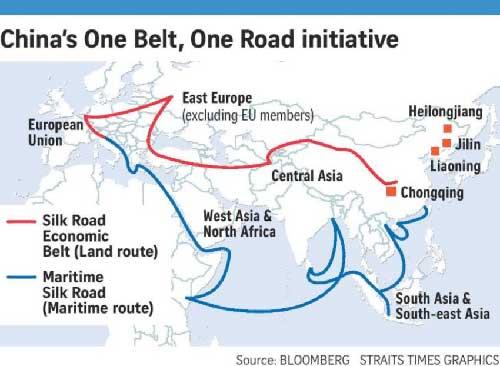China-Lanka relations, its debt burden and China’s BRI - EDITORIAL

China and Sri Lanka have historically maintained close relations. In AD 400, it is recorded, Chinese monks visited the country. After it achieved independence from the British in 1948, Sri Lanka established diplomatic relations with Beijing in 1950 and co-sponsored the resolution giving the People’s Republic of China permanent membership in the United Nations (UN) Security Council.
In 1952, when Sri Lanka was facing a grave food shortage as she did not have the withal to import her requirements in rice, due to a sharp drop in the price of natural rubber, China bailed us out via a barter deal - the Rubber-Rice Pact. China exchanged Sri Lanka’s rubber at higher than market rates for rice cost at far less than market prices! The US cut off all aid to Sri Lanka for entering into a trade deal with a China!
During Lanka’s near three-decade long civil war, when all western nations led by the US refused to sell weaponry to the country alleging war crimes, and India was supportive of the militant groups, China helped provide the much-needed logistics which ultimately helped defeat the rebels and bring peace to the country.
Today China is embroiled in a trade war with the United States. The US accuses China of breaking a deal to settle their trade dispute, and has imposed tariffs on a broad range of Chinese goods. China has denied the allegations. The US has imposed taxes on Chinese goods and a Reuters report (June 1, 2019) said the United States began collecting higher, 25% tariffs on many Chinese goods arriving in US seaports on Saturday. The tariff increase affects a broad range of consumer goods, and intermediate components from China.
On Saturday, China began collecting higher retaliatory tariffs on much of a $60 billion target list of U.S. goods. The US has also blacklisted Huawei Technologies Co. Ltd, the world’s largest Telecom Network Gear maker and is pressuring its western allies to do the same and three days ago (May 29, 2019) Chinese newspapers reported China was preparing to retaliate by blocking the sale of rare earths to the US - a move which could cripple the US manufacturing sector. At another level, the US has been warning Sri Lanka against aligning itself with China’s ‘Road and Belt Initiative’ which the US claims it entices states into undertaking prestige projects with little practical value and end up being indebted to China.
The US, its western and eastern allies take as an example, the construction of the mega port at Hambabtota, the construction of the little-used international airport at Mattala as unnecessary projects constructed with Chinese loans to entice Sri Lanka into a debt trap. The subsequent leasing of the facility to China on a long-term lease these countries claim is proof of their claims. This project is largely the reason why Sri Lanka is cited as a clear example of getting trapped in Chinese debt and being forced to hand over assets with national and strategic importance to China.
The general belief is that Sri Lanka was unable to pay off the loans obtained from China to construct the Hambantota Port, had no alternative, but hand over the same to Chinese control to pay off the debt. What many have failed to recognise is that Sri Lanka’s total debt, includes loan repayments to individual nation lenders such as Japan and China, as well as to multilateral financial institutions like the IMF.
However as the Central Bank reported in 2018, 14% of the US$55,000 million Sri Lanka owes in foreign debt is owed to the ADB, while 12% to Japan, 11% to the World Bank and 10.6% to China. The country will have to pay back US$17,000 million worth of debt between 2019 and 2022, mainly to commercial banks and to traditional multilateral donors.
Its currency reserves - US$9.100 million - are insufficient to meet the payments in the medium term, especially given that the country’s balance of payments in the last four years has barely reached a surplus of US$150 million. Further, the Sri Lankan public debt stands at 77% of its GDP, making it the most indebted among other neighbouring countries such as India, Malaysia, Pakistan and Thailand. This suggests Sri Lanka has a debt problem that extends beyond its commitments to China. Indeed, the South China Morning Post reports states, part of China’s loan to Sri Lanka is intended to serve some of the debt owed to other creditors.

